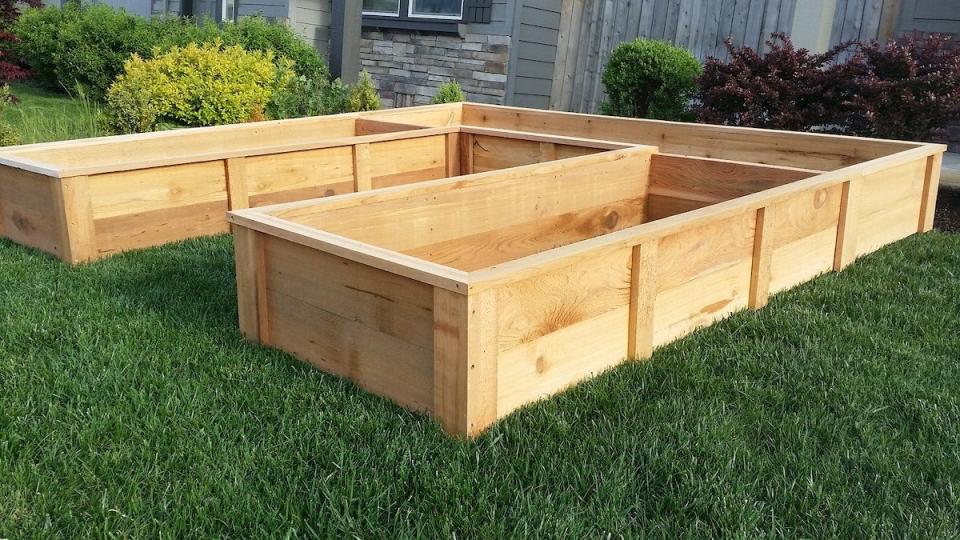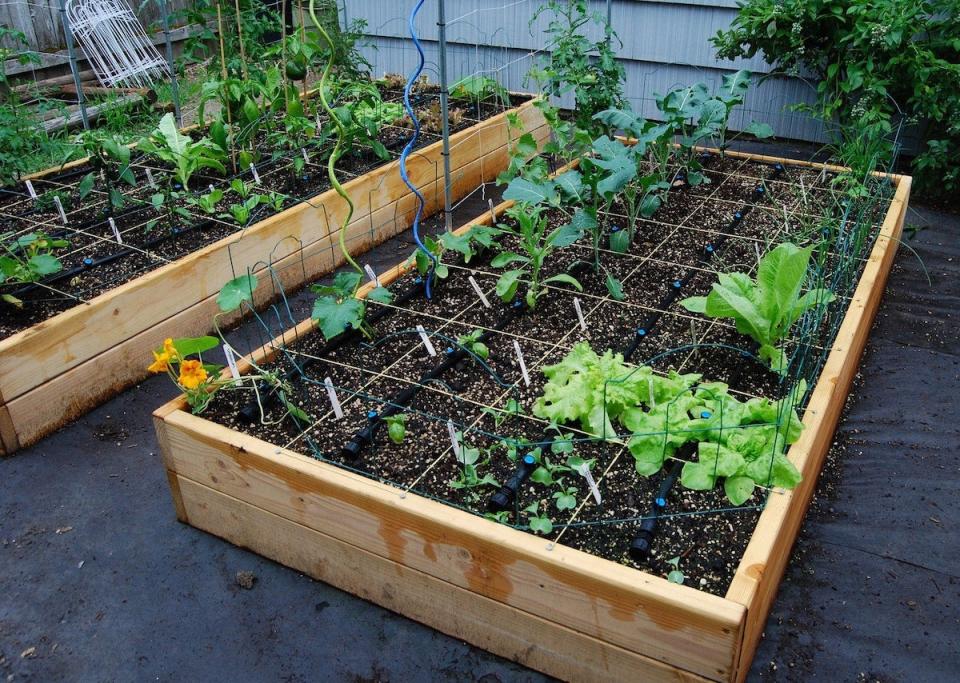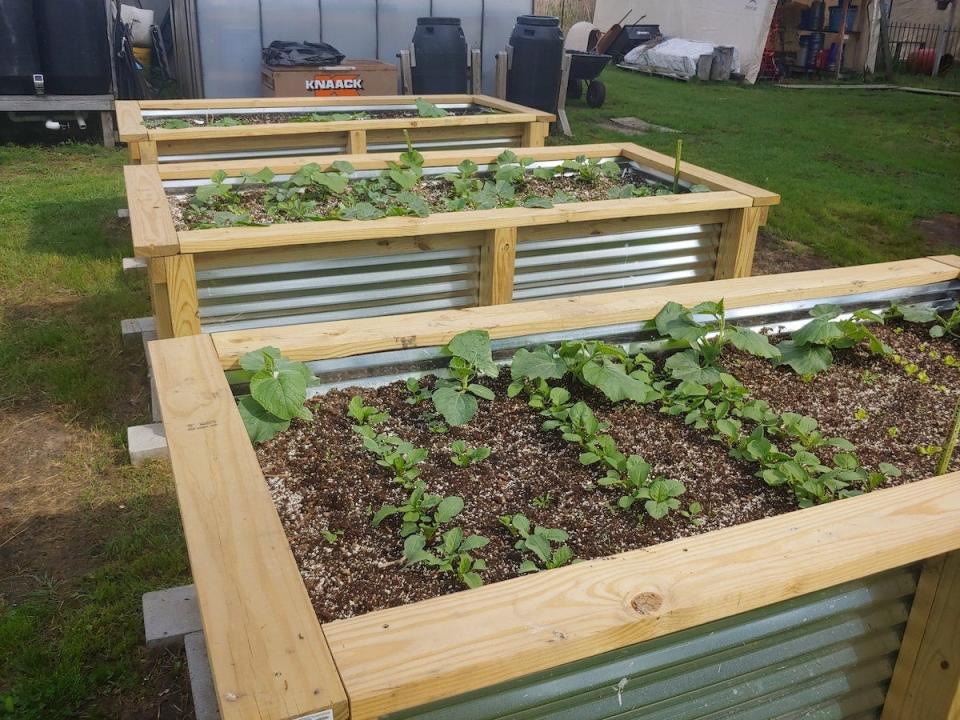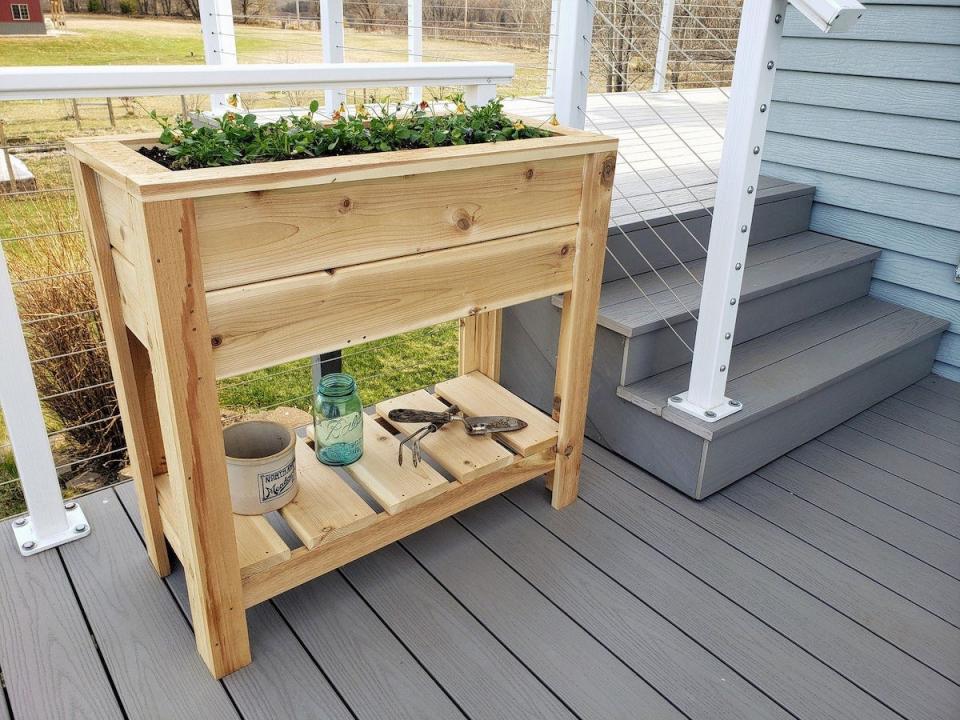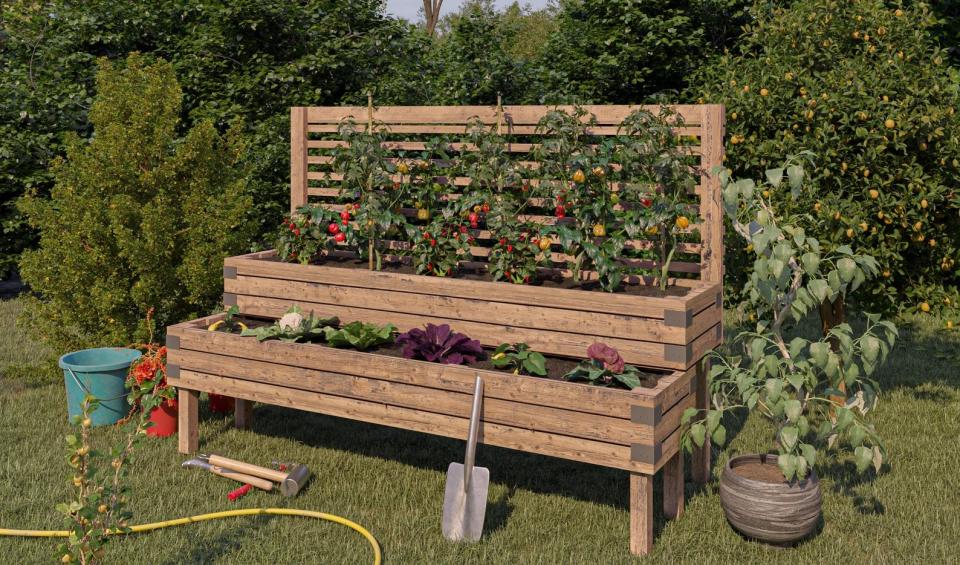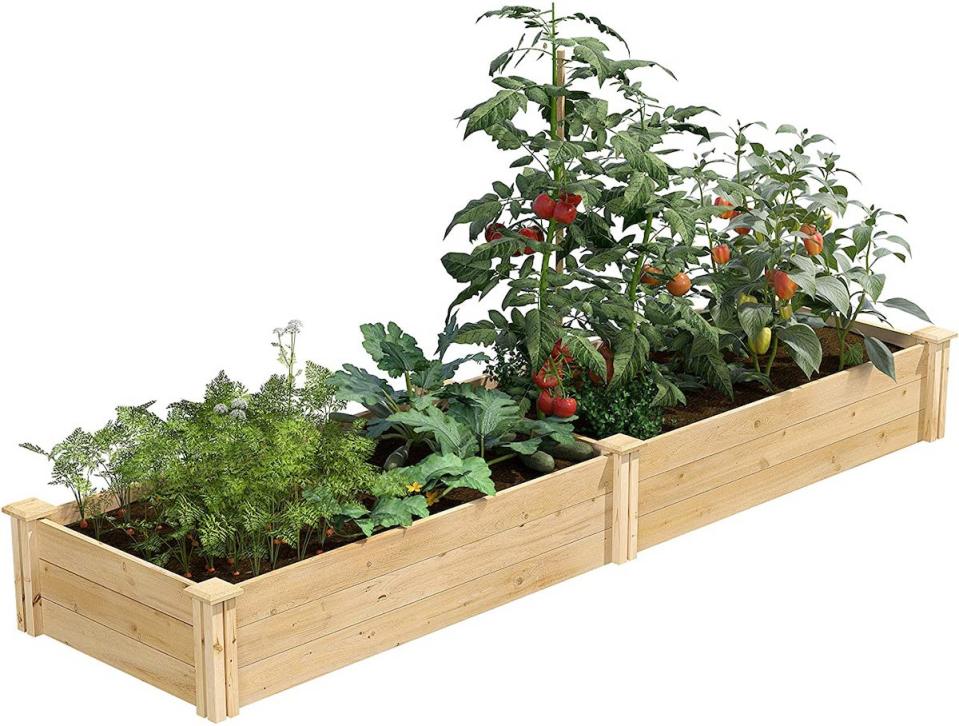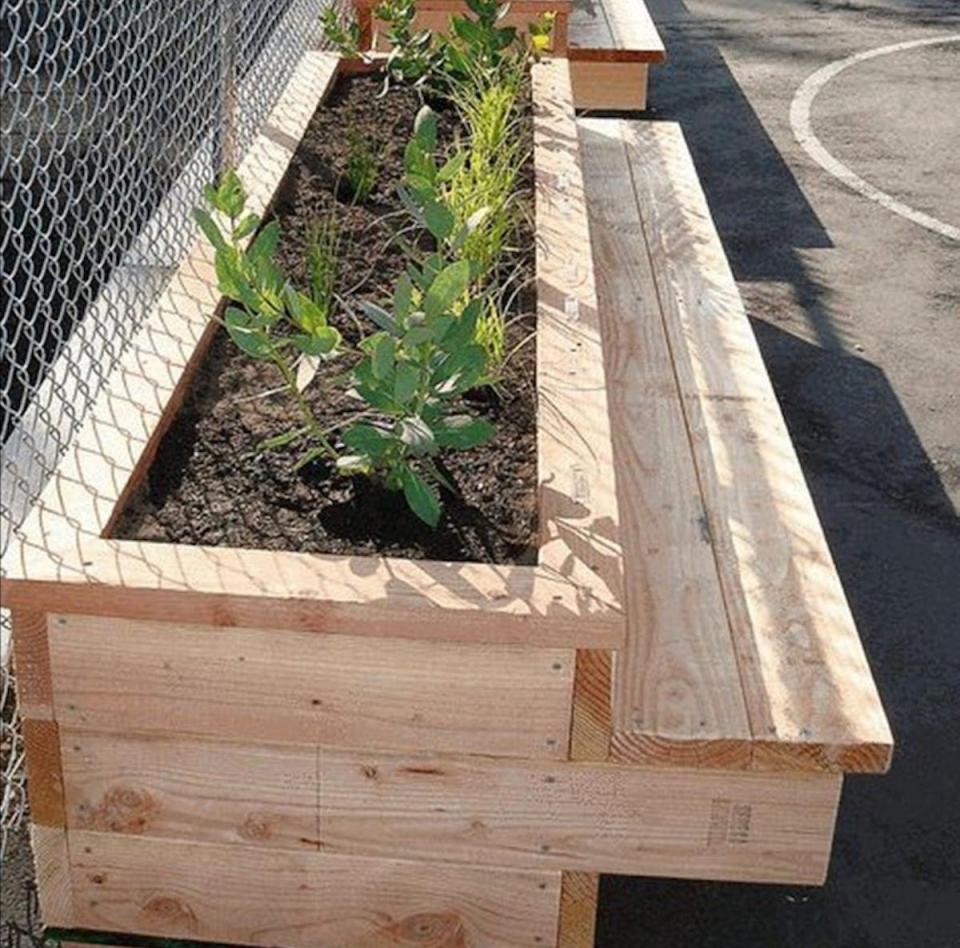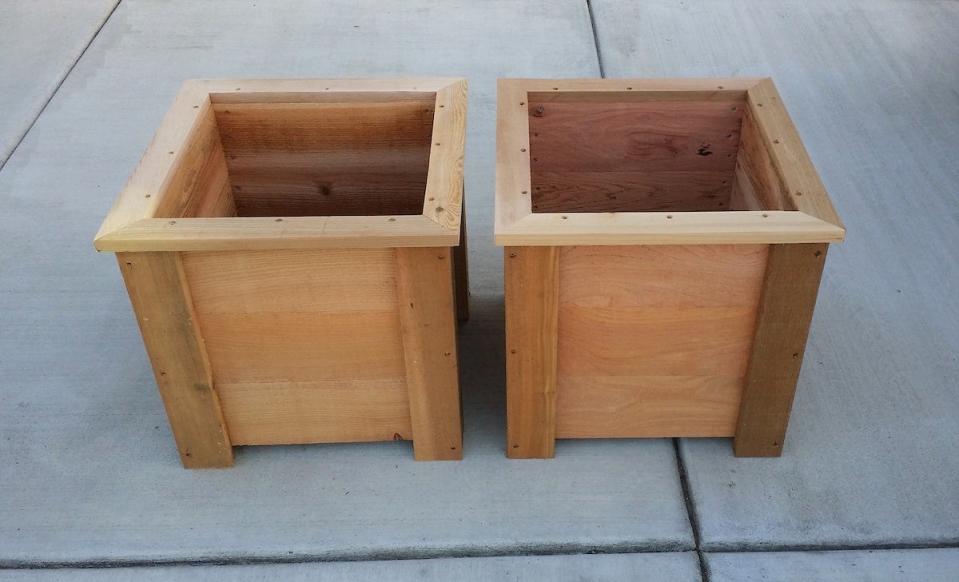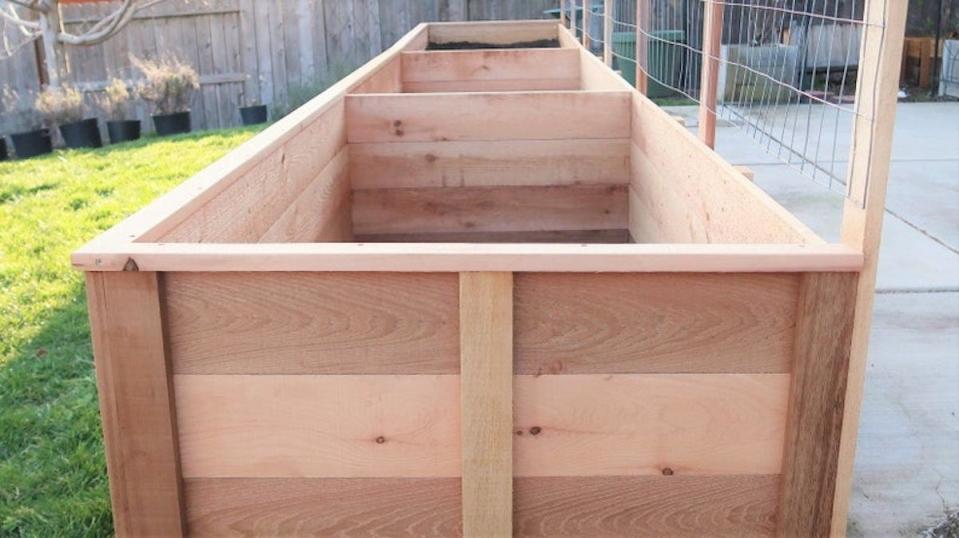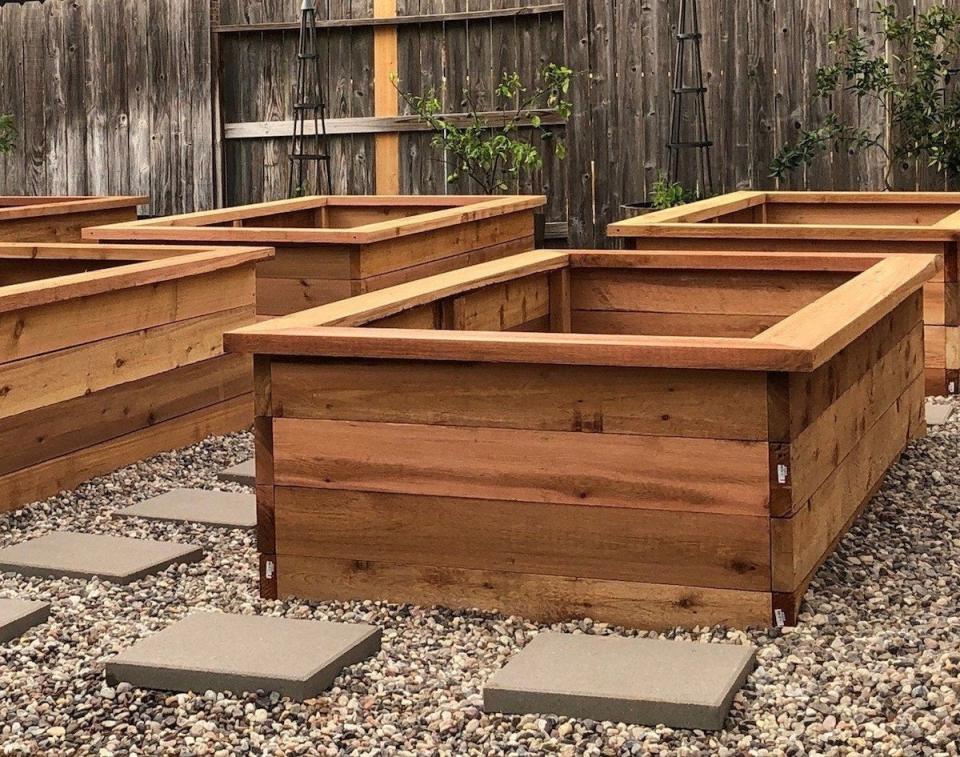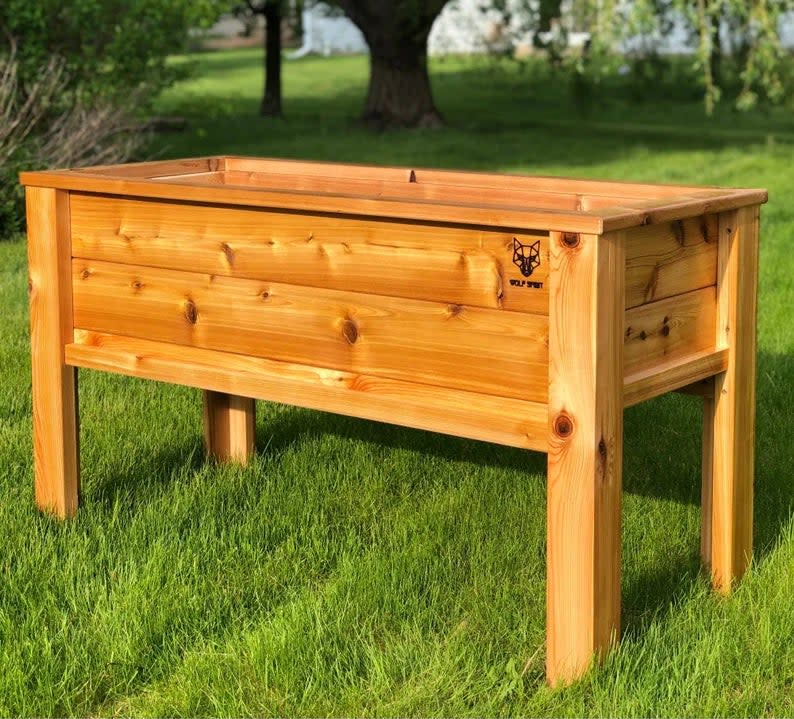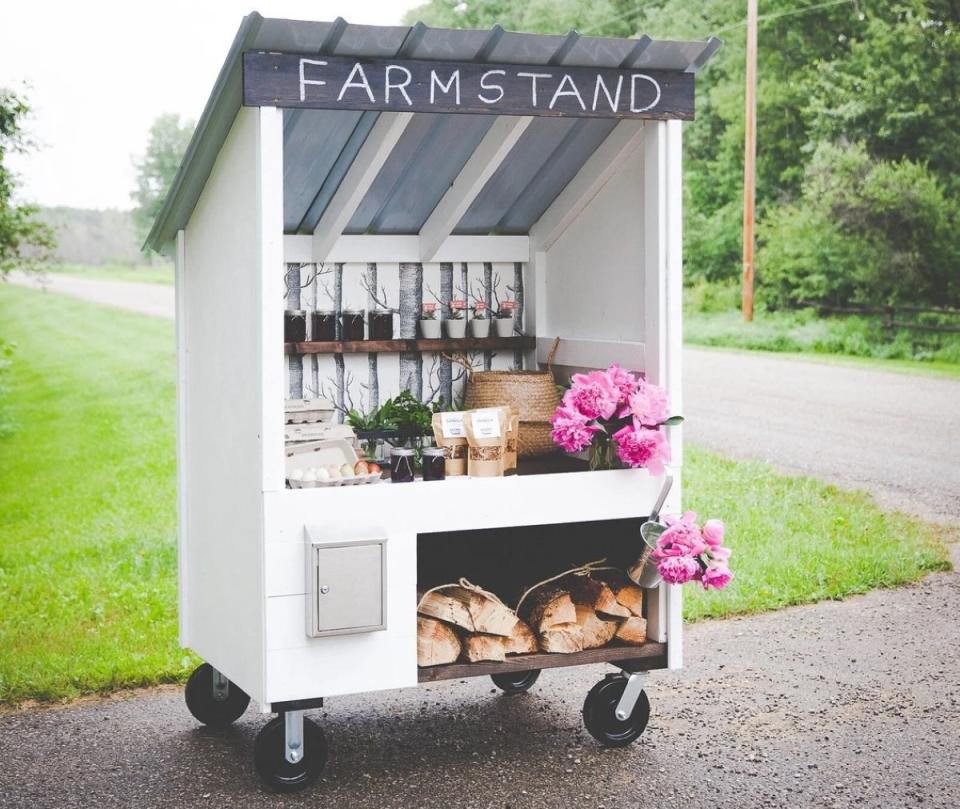Elevating a garden solves numerous problems. Raised beds warm up faster in spring for an earlier start to the gardening season. They offer total control over the soil makeup, fertility, and moisture. They reduce or eliminate bending and stooping for ground-level tasks like planting and weeding. In areas where the soil is loose sand or heavy clay, elevated garden beds address water retention and drainage issues. Raised bed gardening also helps to reduce weed competition—and the list goes on.
Whether your garden is limited to a patio or if it expands over several acres, a raised bed could be a good fit. Building one is an easy DIY project that you can complete in a day or two. Raised bed garden plans come in all shapes and sizes to fit almost any space, and they can include conveniences like benches, trellises, or cages to support and protect sensitive plants. Follow along as we take a look at some of the best elevated planter box plans available.
Tips for Building a Raised Garden Bed
When planning a raised garden bed, choose a suitable location for it and assemble it in that spot so you don’t have to carry the finished product to another location. It’s important to note that you’ll want to choose a location that gets a lot of sun exposure year-round.
The size and depth of the bed should be informed by the plants you plan to grow. “A raised garden bed should be at least 12 inches deep,” Tony O’Neill, gardening guru and founder of Simplify Gardening, says. “This depth supports most vegetables, allowing enough room for roots to grow. However, if you're planning to grow root crops like carrots or potatoes, a depth of 18 to 24 inches can be more beneficial.”
Keep your veggies safe from rodents. To prevent pests from burrowing into the bed, staple hardware cloth to the underside of the bed to keep them out.
Use scrap wood or rope to test out the layout and location of the raised bed before making final decisions.
Choose a durable wood species for the raised garden bed, like cedar or redwood, to prevent rotting and prolong longevity. According to O’Neill, raised beds made from wood species like cedar can last 10 to 15 years.
To prevent weeds and grass from growing into your raised bed, consider adding a weed-blocking fabric at the bottom before filling it with your chosen type of soil.
Use high-quality soil that's meant for raised bed gardening. “You don't necessarily need to change all the soil in your raised bed unless you encounter disease or severe nutrient imbalance,” O’Neill states. “Instead, amend the soil annually with compost to replenish nutrients. This practice keeps the soil healthy and productive.”
DIY Raised Garden Bed Plans for Large and Small Spaces
1. U-Shaped Cedar Raised Garden Bed
Photo: Stewart Landing Co. via Etsy
Cedar is known for its natural rot resistance, making it an excellent material for garden bed construction. This U-shaped raised garden bed is an ideal design to maximize your growing space in a smaller area. The easy-to-follow instructions integrate three garden boxes to form a compact garden with an open center for easy access from every side.
Get the Stewart Landing Co U-Shaped Cedar Raised Garden Bed Plans at Etsy for $12.99.
2. Set of Three Raised Garden Beds
Photo: Verdura Gardens via Etsy
Designed with durability in mind, these raised bed frames are made of double-height 2x6 lumber for many years of intensive gardening. The simple pattern offers a finished look that accentuates the appearance of your flowers, veggies, and herbs. This digital plan set includes instructions for building three different sizes of raised beds—4 feet by 4 feet, 4 feet by 8 feet, and 4 feet by 10 feet.
Get the Vendura Set of Three Raised Garden Bed Plans at Etsy for $16.95.
3. Corrugated Metal Raised Garden Bed
Photo: Knottalotta Acres Craft via Etsy
This waist-height elevated garden bed minimizes rabbit damage and weed pressure while eliminating bending and stooping. The 4-foot by 8-foot box is constructed so that the wooden frame does not contact the garden soil (and possibly rot), extending the life of the planter by many years. Plans for additional planter sizes are available through the link.
Get the Knotalotta Acres Craft 4x8 Corrugated Metal Raised Bed Plans at Etsy for $5.99.
4. Stand-Up Planter Box
Photo: Overall Makerworks via Etsy
Here is the perfect spot to grow herbs or flowers on the deck, patio, or balcony just outside your door. The elevated 36-inch by 14-inch, 10-inch deep planter box stands 33 inches high at the rim. The shelf beneath the box offers a convenient storage location for pruners, fertilizer, garden gloves, and other small gardening equipment.
Get the Overall Makerworks Stand-Up Planter Box Plans at Etsy for $5.
5. Two-Tier Raised Bed
Photo: Shedplan via Etsy.com
We love the idea of this clever, two-tier raised garden bed: The top of the lower tier is 2 feet off the ground, so you don't have to do much bending or squatting, and you can easily reach over the lower tier to access the second one. Each bed is 11 inches deep, which will accommodate most garden vegs, and the bed is 24 square feet total. Plant some beans and peas up top and some carrots, herbs, and salad greens on the lower level, and you're golden.
Get the Shedplan Two-Tier, 3x8 Raised Garden Bed Plan at Etsy for $8.74.
6. Greenes Raised Garden Kit
Photo: amazon.com
For those who are not interested in buying supplies and following a plan to measure, mark, and cut lumber, a DIY raised garden bed kit is just the thing. This 2-foot by 8-foot, 10.5-inch deep raised bed kit comes ready to build. Just slide the side rails into the slotted corner posts and screw the tops in place and your raised bed frame is ready to fill with soil. These kits can also be double-stacked for a 21-inch deep garden. Raised bed garden soil is sold separately.
Get the Greenes Fence 2 ft. x 8 ft. Raised Garden Kit at Amazon for $129.99.
7. Garden Bench Planter
Photo: Horizon Design Studios via Etsy
This sturdy garden bench planter is made with strong 2x6 and 2x4 lumber and includes an integrated full-length bench along one side. The strong, linear form and elevated garden surface make it perfectly suited for adding an element of privacy at the edge of a patio or defining a garden border. The overall dimensions are 74 inches long, 39 inches wide, and 18 inches high.
Get the Horizon Design Studios Garden Bench Planter Plans at Etsy for $6.75.
8. Cedar Planter Box
Photo: Stewart Landing Co. via Etsy
A cedar planter is a natural alternative to glazed pottery for container gardening. Build your own with these easy-to-follow plans. If you’re not sure what size you need, no problem. Each order comes with complete plans for three different sizes—14 inches square by 12 inches deep, 18 inches square by 18 inches deep, and 24 inches square by 18 inches deep.
Get the Stewart Landing Co Cedar Planter Box Plans at Etsy for $12.99.
9. 18-Foot Raised Planter and Trellis
Photo: Stewart Landing Co. via Etsy
When you need to grow more, you need a bigger garden. This extra-long planter offers plenty of growing space, along with a built-in trellis system to train climbers like beans, cucumbers, or even roses. The planter box measures 18 feet long, 3 feet wide, and 22 inches deep, and the trellis rises 5 feet above the box. Build it with cedar boards for natural rot resistance.
Get the Stewart Landing Co 18-Foot Raised Planter and Trellis Plans at Etsy for $12.99.
10. Cedar Raised Bed Garden Box
Photo: Shovel & Sage via Etsy
This 4-foot by 8-foot, 24-inch deep cedar raised garden bed is made with heavy-duty 2x6 lumber for natural beauty and excellent durability without paint, stain, or varnish. The surface is high enough to eliminate most bending and stooping, and the box offers plenty of soil depth for all kinds of plants.
Get the Shovel and Sage Cedar Raised Bed Garden Box Plans at Etsy for $20.
11. Elevated Garden Planter
Photo: Wolf Spirit Woodwork via Etsy
Build this versatile elevated cedar planter for the patio, deck, balcony, or further out in the garden. The elevated surface saves fatigue to your back and knees while tending your plants, while the generously proportioned planter box offers ample room for roots to spread. It measures 51.25 inches long, 22.25 inches wide, and 28.25 inches high.
Get the Wolf Spirit Wood Work Elevated Garden Planter Plans at Etsy for $6.98.
12. Elevated Farmstand
Photo: KromaAcresPlans via Etsy
No, it isn’t a raised bed, but this versatile DIY farmstand is the perfect addition for those whose raised bed gardens overflow with produce. The plans include easy-to-follow instructions to help build a charming 63 inch-by 48-inch wide farmstand, which rolls on casters so you can stow it safely at night..
Get the Kroma Acres Plans DIY Farmstand at Etsy for $14.52.
The prices listed here are accurate as of March 8, 2024.
